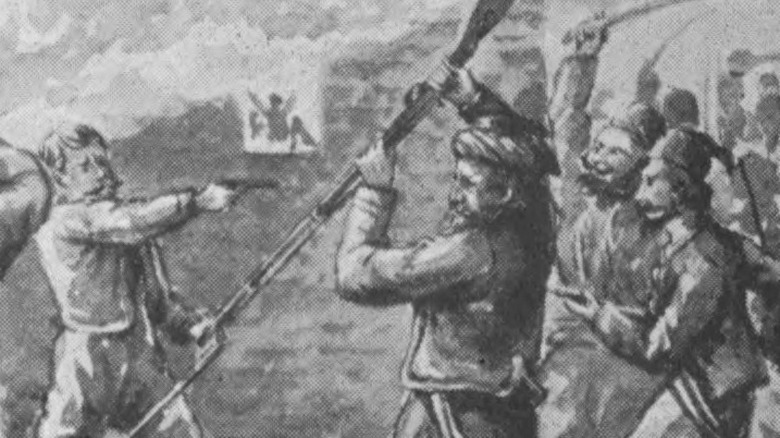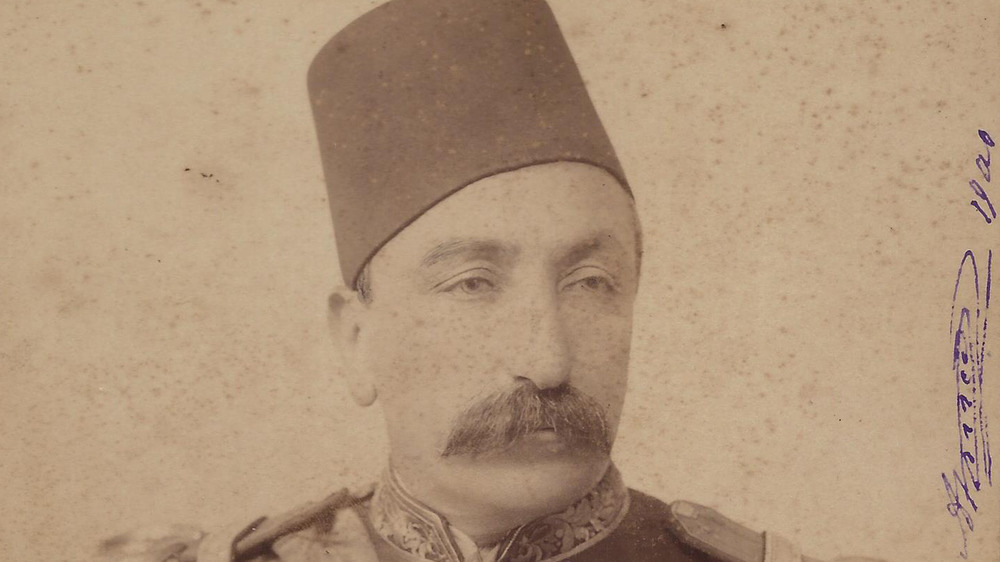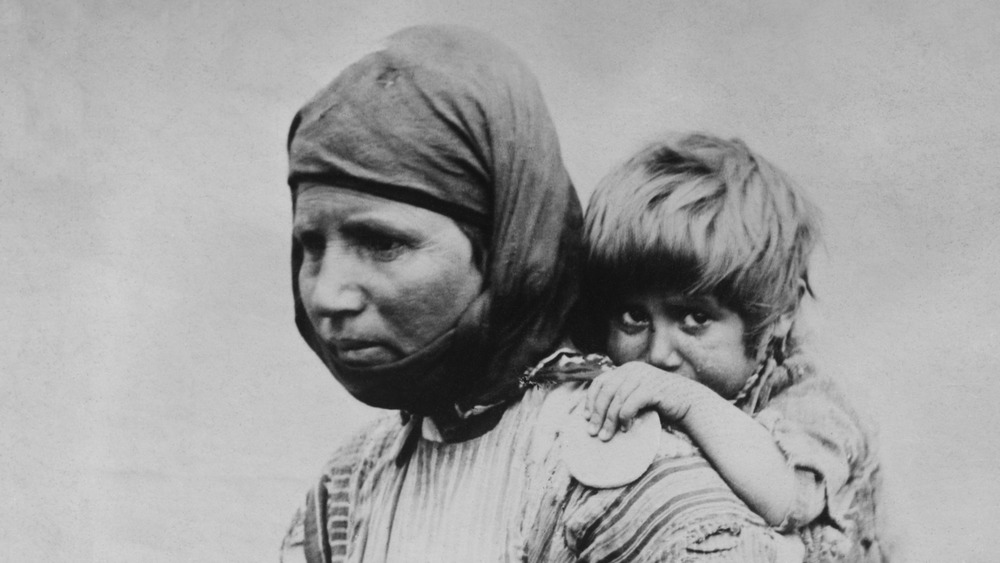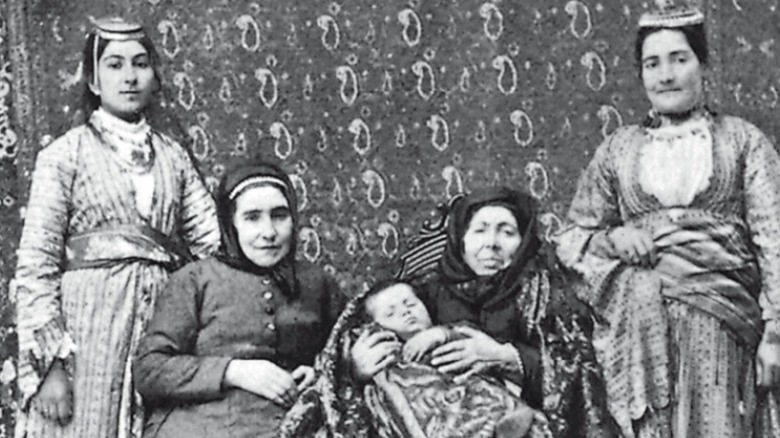The Tragic Untold Story Of The 19th Century Armenian Genocide
According to the University of Minnesota, many consider the Hamidian massacres of 1894-1896 to be a "dress rehearsal" for the 1915 Armenian Genocide. The Hamidian massacres were a little less systematic than the Genocide was. Though ironically, it was the Young Turks, the revolutionary opponents to the Hamidian regime, who expanded upon "Abdülhamid's vision of imperial preservation," as Ronald Grigor Suny wrote in "The Hamidian Massacres, 1894-1897: Disinterring a Buried History," posted at Open Edition Journals.
Hundreds of thousands of people lost their lives, and the number of forced conversions was also very high, although this offered no guarantee of protection. In the province of Harput alone, there were at least 15,000. According to "The 1895-1896 Armenian Massacres in Harput" by Deborah Mayersen, also posted at Open Edition Journals, local officials even reached out to the government, which gave its official position on November 14, 1895, stating that Armenians should essentially "apply again when order is restored, then their conversions can be processed according to the proper procedure."
The National Council for the Social Studies (posted at Genocide Education) writes that thousands of Armenians also escaped, becoming refugees in Europe and the United States. Others went to Russia, and found themselves deported back to the Ottoman Empire by the end of the century, per the Journal of Historical Sociology (posted by the Wiley Online Library).
And while Sultan Abdülhamid II downplayed the massacres, the next generation was taking notes. This is the tragic untold story of the 19th century Armenian genocide.
Leading up to the massacres
During the end of the 19th century, Sultan Abdülhamid II was faced with what he considered "the Armenian Question." The 1878 Treaty of Berlin had meant to provide Ottoman Armenians with more rights, including fair taxation, protections from attacks, and legal rights in Ottoman courts, but Sultan Abdülhamid II never granted Ottoman Armenians these rights.
This mainly occurred because, according to the National Council for the Social Studies, Sultan Abdülhamid II had also replaced the Russians in the role of "ensuring that the Armenians in Ottoman territory would gain more rights." As a result, the promised reforms never came. In response, Ottoman Armenians continued protesting the various discriminatory laws.
Two revolutionary parties, the Hunchak and the Dashnaktsutyun, had also emerged, and though neither were too popular, Sultan Abdülhamid II was still worried about their influence, per Encyclopedia Britannica. However, as Ronald Grigor Suny notes in "The Hamidian Massacres, 1894-1897," the later "massacres were more likely to occur where there were no revolutionaries than in places (like Van) where Armenians activists were more numerous," although this is not to say that Van wasn't also targeted. The History Net writes how Van resisted the Hamidian massacres, although the "cityscape was still scarred by numerous burned and pillaged Armenian homes and properties."
Targeting Armenians across the Ottoman Empire
One of the first massacres occurred in 1894, when Armenians in the Sasun region were protesting an oppressive tax. According to Encyclopedia Britannica, Kurdish tribesmen and Ottoman soldiers burned several villages and killed thousands of Armenians in response.
According to "The Thirty-Year Genocide" by Benny Morris and Dror Ze'evi, in 1891, Sultan Abdülhamid II had also created the Hamidiye Light Calvalry Regiments. Recruiting Turks and Kurds, their job was to "incorporate or at least to neutralize the non-state spaces" that the state couldn't govern, though they were mainly deployed to places with high Armenian populations. The Hamidiye also joined in on the massacres, propelled by the sultan's sectarian rhetoric that aimed to "replace the multiethnic commitments and religious toleration of Ottomanism."
Another protest in September 1895 (per Armenian-Genocide.org) in Constantinople, now known as Istanbul, also turned into a massacre after police responded to a demonstration. According to Facing History, another non-violent demonstration one month later, on October 1, also "turned into a slaughter." Soon, massacres had erupted in almost "every major Armenian-inhabited town of the empire." Across the empire, from Constantinople to Erzurum, the massacres continued for another two years.
One of the worst atrocities occurred in December 1895, when 3,000 Armenian women and children, who had taken refuge inside the Armenian cathedral of Urfa, were trapped and burned alive. Children in History writes that the massacres lasted until 1897, and claimed between 80,000 and 300,000 lives.
Indiscriminate anti-Christian pogroms
Although initially Armenians were the main targets of the massacres, soon others of Christian faith, like Assyrians and Greeks, also came under attack. Greek City Times writes that the Massacre of Amida, also known as the Massacre of Diyarbakır, resulted in the deaths of 100,000 Greeks and 25,000 Assyrians.
In "Native Christians Massacred" (posted at Scholar Commons at the University of South Florida), Hannibal Travis notes that a description of the city of Diyarbakır in 1895 from the French vice-counsul "reminds us of Kristallnacht in Nazi Germany." Facing History notes that while Ottoman officials repeatedly claimed that the massacres were in response to an armed rebellion, it was clear to observers that the massacres "followed a similar pattern."
The bodies were also often mutilated. "The Turks Before the Court of History" quotes W. L. Sachtleben, an American who was in the Ottoman Empire photographing during the massacres, describes the bodies as "fearfully mangled and mutilated." The bodies were so mutilated, that Sachtleben initially thought the damage was done by dogs.
In "The Hamidian Massacres," Suny notes that mostly the world reacted with indifference. Many bought into the provocation theory, and when accounts were reported in American newspapers, they were accused of engaging in "atrocities pornography." But by 1897, the international community was openly disparaging Sultan Abdülhamid II's actions, and as a result the massacres started to peter out. During World War I, the Ottoman Empire also went on to commit systematic genocide against the Assyrians and the Greeks, in addition to the Armenians.



